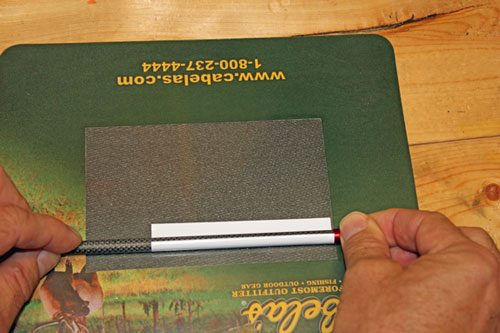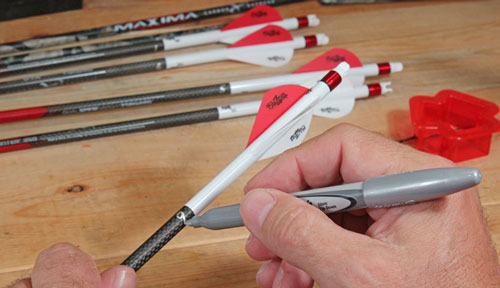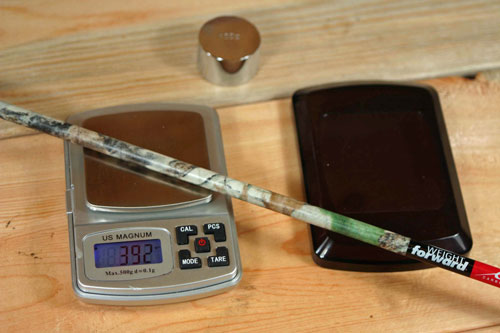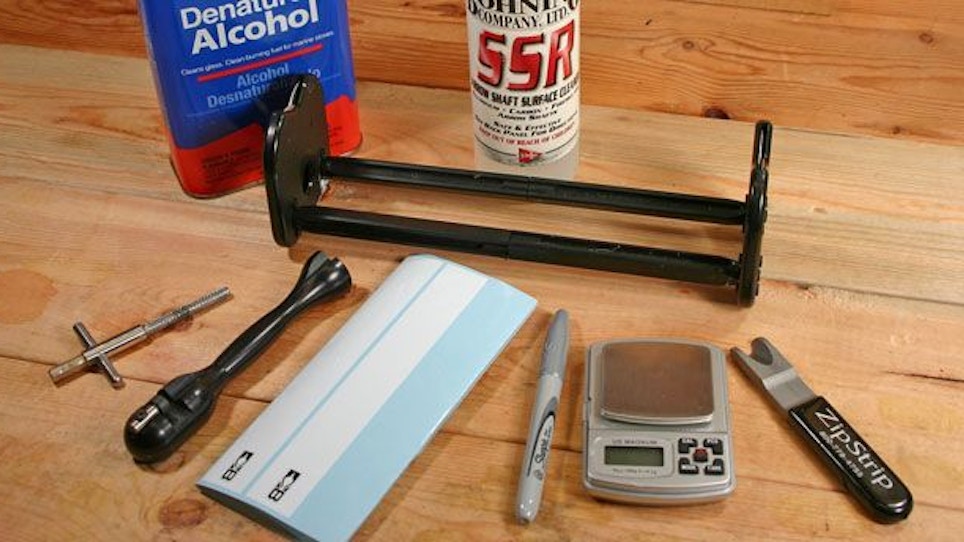Bowhunting is challenging, building arrows is not, and many enjoy the control it offers over the finished product, for the opportunity to experiment with different types of fletching, and for the excuse to escape now and then for some quiet time away from TVs and computers.
Beyond a fletching jig, raw shafts (and the inserts and nocks that generally come with them), vanes or feathers, and one or two adhesives, what tools and supplies might the serious arrow-builder consider?
Wraps

Wraps aren’t essential, but they offer some real advantages. Without wraps, refletching arrows requires the use of solvents and a fair amount of scraping to remove the original adhesive (unless you’ve fletched with feathers and feather fletching tape), which is time-consuming and risks damaging or even destroying the shaft. Wraps, on the other hand, can be easily peeled off, leaving a relatively clean shaft underneath. Add to that the fact that wraps can increase visibility for recovering arrows or observing the quality of hits on game. The only downside is a slight increase in arrow weight.
Arrow Spinner
Not until you’ve screwed a broadhead into the insert and spun the arrow to insure everything is straight do you really have a finished arrow. I prefer the plastic spinners that come apart because I can take them with me when I travel.
White Or Silver Magic Marker

The last step after you’ve made your arrow and tested it on the spinner is to number it. Noting that the same arrow is consistently outside the group will tip you off that there is a problem with that particular arrow, not with your bow or your shooting form.
Fletch Stripper
This isn’t so much an arrow building item as an arrow repairing item, but this is a worthwhile tool. Yes, you can use a pocketknife, but it doesn’t work as well and entails a higher risk of damaging the shaft, not to mention your hand.
Carbon Preparation Tool
This scuffs up the inside of the shaft to aid in adhesion of the insert. As a substitute, sandpaper works, but the tool is a little quicker, more convenient, and doesn’t wear out.
High-Speed Saw
A saw of at least 5,000 rpm’s is recommended to cleanly cut carbon shafts without damaging the carbon fibers or raising a bur. The alternative is to have manufacturers or dealers cut shafts to size for a small fee.
ASD
The Arrow Squaring Device from G5 shaves the face of the insert to make it square to the shaft. It’s a small investment that will pay for itself the first time it saves a finished arrow from the junk pile.
Cresting Supplies
For the serious customizer, cresting is a whole subject in itself, but be aware that cresting paint is heavier than wraps.
Digital Scale

Bowhunters want to know what their arrows weigh and, what’s probably more important, that the weight is consistent. Arrows outfitted identically should be within 5 grains of each other.






